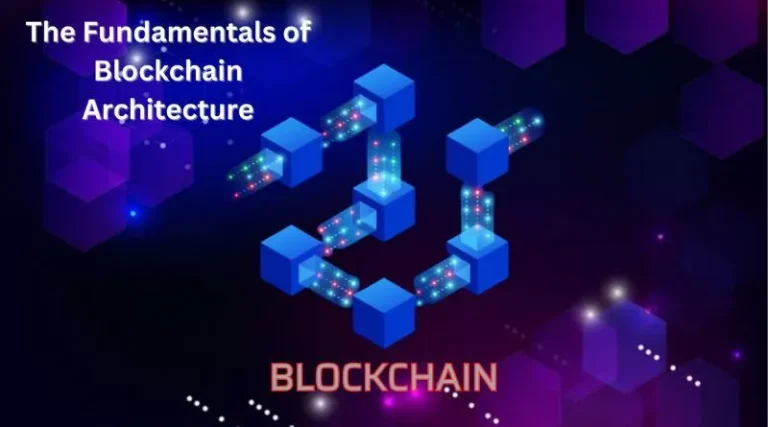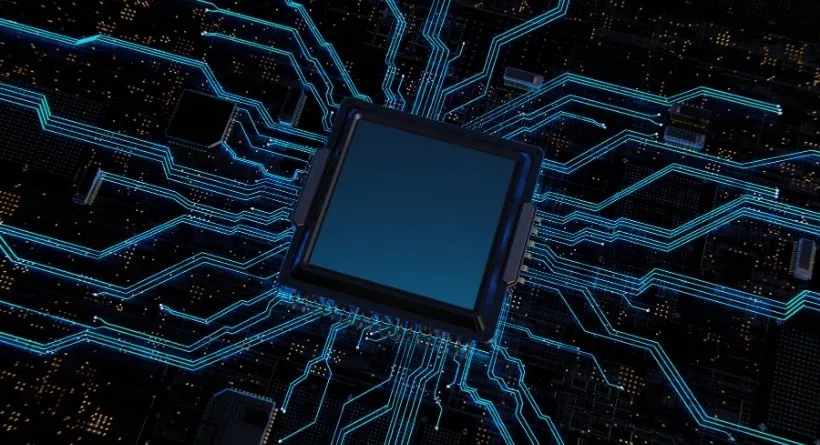The phrase “Blockchain” has gained popularity and is frequently used in conversations concerning technology, money, and daily life. If you’ve been thinking about learning more about blockchain or are taking a Blockchain Course, you’re already well on your way to comprehending this ground-breaking technology. But What is Blockchain, and how does its design function? In this thorough introduction, we’ll dig into the principles of blockchain architecture and shed light on how this game-changing technology operates from the inside out.
Table of contents
- What is Blockchain?
- Fundamental Components of Blockchain Architecture
- Blockchain Course
- Conclusion
What is Blockchain?
Let’s start by providing an overview of blockchain architecture before starting this adventure.
A blockchain’s fundamental component is distributed ledger technology, which keeps track of transactions across several computers and ensures their transparency, security, and immutability. Blockchain runs on a decentralised network as opposed to conventional centralised systems, where data is controlled by a single organisation (such as a bank or government). Because no single entity controls the whole blockchain, it is intrinsically impervious to fraud and manipulation.
A blockchain comprises a series of blocks, each with a certain set of transactions. “blockchain” refers to the chain formed when these blocks are joined using cryptographic methods. A network of nodes (computers) verifying and logging transactions upholds this chain. Let’s dissect the blockchain architecture’s core parts to have a better understanding of it.
Fundamental Components of Blockchain Architecture
- Decentralisation: The distinguishing feature of blockchain technology is its lack of central authority. Because there is no central authority or middleman, transactions occur directly between peers and the participants. Decentralisation lowers the possibility of single points of failure while boosting security.
- Consensus Mechanisms: All network users must establish a consensus before transactions can be added to the blockchain. Nodes reach consensus on the inclusion of new blocks and the legitimacy of transactions using a variety of consensus procedures, including Proof of Work (PoW) and Proof of Stake (PoS).
- Cryptography: The blockchain architecture relies heavily on cryptographic methods. They protect blocks and transactions, guaranteeing that data is safe and untamperable. Public and private keys are utilised to enable safe transactions and prove ownership.
- Immutable Ledger: A transaction becomes immutable once added to the blockchain. As a result, it may serve as an irrevocable historical record of every transaction ever made on the network and cannot be changed or erased.
- Smart Contracts: These contracts automatically carry out their conditions since they are written in code. When predetermined circumstances are satisfied, they automate and enforce the performance of agreements. The idea of smart contracts gained popularity because of Ethereum, a well-known blockchain platform.
- Nodes: The machines that participate in the blockchain network are known as nodes. In addition to preserving copies of the blockchain and validating transactions, they are essential for reaching consensus. Nodes can be divided into full nodes (keeping a full copy of the blockchain) and lightweight nodes (saving a portion).
Blockchain Course
You might be asking why a blockchain course is necessary now that we’ve established a basic grasp of blockchain architecture. The rising need for blockchain knowledge across multiple businesses is the solution’s key. Why enrolling in a blockchain course could be a wise career choice is as follows:
- Emerging Opportunities: Cryptocurrencies are not the only use for blockchain technology. Finance, supply chain, healthcare, and other industries are just a few of the many sectors where it has applicability. Developing your blockchain knowledge will put you in a position to investigate new job options.
- Competitive advantage: As blockchain technology increases, businesses are looking for experts who can use it to tackle challenging issues. You may stand out from rivals in the job market by obtaining a blockchain certification or passing a blockchain course.
- Diverse Roles: Blockchain knowledge offers the door to various positions, including those of blockchain developer, consultant, smart contract developer, and blockchain analyst. These positions frequently offer competitive pay and potential for promotion.
- Business ventures: If you’re an entrepreneur, knowing about blockchain technology might be helpful. You may look at cutting-edge company concepts or use blockchain to run safe, open, and effective operations.
- Understanding the Future: Blockchain is one of the revolutionary technologies of the future, which is important to understand. Understanding blockchain architecture will provide insights into how this technology may transform many sectors and social structures.
Conclusion
The universe of blockchain technology is supported by the underlying idea of blockchain architecture. The fundamental components of this ground-breaking technology are its decentralised nature, consensus procedures, encryption, immutability, smart contracts, and nodes. The impact of blockchain extends beyond cryptocurrencies; it has several uses and reshapes sectors in ways we are only now starting to fully comprehend. The demand for knowledgeable people who can realise blockchain’s promise rises as its acceptance grows. So, learning the principles of blockchain architecture is a valuable endeavour that may lead to a world of options, whether you’re a budding developer, a business expert, or simply interested in the future of technology.








